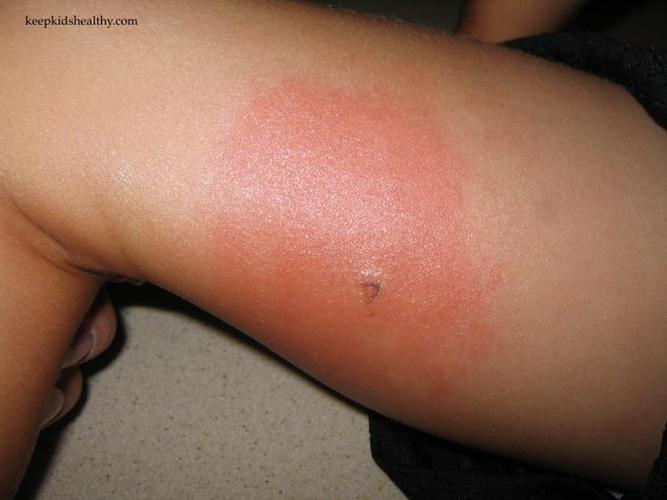
Spider Bite Blister: A Comprehensive Guide
When it comes to spider bites, the immediate reaction is often fear and concern. One of the most common symptoms is the formation of a blister. In this article, we will delve into the details of spider bite blisters, their causes, symptoms, treatment, and prevention. By the end, you’ll have a clearer understanding of what to expect and how to handle a spider bite blister.
Understanding Spider Bite Blisters
A spider bite blister is a fluid-filled sac that forms at the site of the bite. It is a natural response of the body to the venom injected by the spider. While most spider bites are harmless, some can be quite serious, especially if the spider is venomous.
Spider bite blisters can vary in size and appearance. They may be small and red, or large and painful. In some cases, the blister may be surrounded by a red, inflamed area. It’s important to note that not all spider bites result in blisters.
Causes of Spider Bite Blisters
Spider bite blisters are caused by the venom injected into the skin during a bite. The venom contains various toxins that can cause a range of symptoms, including the formation of a blister. The severity of the blister and the symptoms it causes depend on the type of spider and the amount of venom injected.
Some common spiders known to cause blisters include the black widow, brown recluse, and hobo spider. These spiders are found in various parts of the world and can be found in both urban and rural areas.
Symptoms of Spider Bite Blisters
Spider bite blisters can cause a variety of symptoms, which may include:

| Symptom | Description |
|---|---|
| Pain | Immediate and intense pain at the site of the bite |
| Redness | A red, inflamed area surrounding the blister |
| Swelling | Inflammation and swelling of the surrounding tissue |
| Blister | A fluid-filled sac at the site of the bite |
| Itching | Itching around the bite area |
| Nausea and Vomiting | In severe cases, nausea and vomiting may occur |
In some cases, symptoms may not appear for several hours after the bite. If you experience severe symptoms, such as difficulty breathing, swelling of the throat, or intense pain, seek medical attention immediately.
Treatment of Spider Bite Blisters
The treatment for a spider bite blister depends on the severity of the bite and the type of spider. Here are some general guidelines:
-
Wash the bite area with soap and water to prevent infection.
-
Apply a cool, wet compress to reduce swelling and pain.
-
Keep the bite area elevated to reduce swelling.
-
Over-the-counter pain relievers, such as ibuprofen or acetaminophen, can help manage pain and inflammation.
In severe cases, medical treatment may be necessary. This may include antivenom, antibiotics, or other medications to manage symptoms and prevent complications.
Prevention of Spider Bite Blisters
Preventing spider bite blisters involves taking steps to avoid encounters with spiders. Here are some tips:
-
Keep your home clean and clutter-free to reduce spider habitats.
-
Seal gaps and cracks around your home to prevent spiders from entering.
-
Wear gloves when handling items that may have been in a spider’s habitat.
-
Be cautious when walking in areas known to have a high spider population, such as woodpiles, shrubs, and tall grass.
By following these tips, you can reduce your risk of encountering spiders and, consequently, spider bite blisters.



